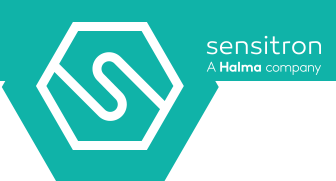
MED: Marine Equipment Directive
MED (Marine Equipment Directive) certification is a mandatory certification for equipment intended for use on board ships flying the flag of a European Union or European Economic Area (EEA) member state. This certification is required by the European Directive 2014/90/EU (replacing the previous 96/98/EC) and ensures that the equipment meets international standards for safety, environmental protection and performance.

MED: historical overview
MED certification has roots dating back to the idea of harmonising maritime safety standards at European level, based on established international regulations. Here are some significant historical references:
- SOLAS Convention (1914): The push for global maritime regulations arose after the Titanic disaster (1912). The first SOLAS (Safety of Life at Sea) Convention was adopted to ensure minimum safety standards for ships, including requirements for equipment on board.
- IMO (1948): The founding of the International Maritime Organization strengthened the international regulatory framework, with conventions such as SOLAS, MARPOL and COLREG establishing technical standards for safety, environmental protection and navigation.
MED: the first European directive
In the 1980s and 1990s, the EU began to recognise the need for a unified approach to marine equipment, to avoid each Member State applying different standards. This would simplify trade and ensure high safety standards across Europe. In 1996, the first MED Directive was introduced:
- Directive 96/98/EC: it aimed to harmonise the requirements for marine equipment in EU countries. It was based on IMO standards, but introduced the ‘Wheelmark’ concept to identify compliant products.
- Adoption of the Wheelmark: The wheel symbol became the distinctive mark for equipment certified for use on board ships, a symbol of conformity and quality.

MED: how it is divided
MED certification is based on a classification of equipment into different categories, with the aim of covering all types of equipment used on board ships, ensuring compliance with international standards (e.g. IMO, SOLAS). The directive establishes both product categories and conformity assessment modules. This is how it is structured:
- Security and fire-fighting systems:
- Smoke and heat detectors.
- Portable and fixed fire extinguishers.
- Fire-resistant materials for ship interiors.
- Water or foam spraying systems.
- Navigation and communication equipment:
- Radar and electronic plotters.
- AIS (Automatic Identification System) systems.
- VHF, EPIRB (Emergency Position Indicating Radio Beacon) and other communication devices.
- Magnetic and gyroscopic compasses.
- Crew and passenger safety products:
- Lifejackets and lifebuoys.
- Inflatable life rafts.
- Evacuation means and flotation devices.


MED: conformity assessment
The certification process consists of standardised modules (B, D, E, F and G), which regulate the conformity assessment of products at different stages of their production. Our gas detection systems for the marine sector are certified according to the MED Directive 2014/90/EU by obtaining module B (ec type examination) and module D (conformity to type based on quality assurance in the production process). The certification process involved products that were already ATEX (both construction and performance) and SIL certified and involved specific EMC and vibration tests.
After Brexit, the UK did not recognise the MED mark and directive, requiring ‘United Kingdom conformity assessment (UKCA)’. Sensitron has obtained UKCA Module B and is applying for Module D.
Discover our MED certified products

SMART S MS
The SMART S-MS gas detector is certified SIL 2 Hardware, SIL 3 Software, ATEX for zone 1 with marking II2G Ex db IIC T5 Gb and has Lloyd's Register certification for marine.

MULTISCAN ++MED
The MULTISCAN++MED control unit is ATEX certified, meets SIL2 functional requirements and is Lloyd's certified for marine.
Explore our spaces in virtual reality
Within the Sensitron metaverse you can explore application realities reconstructed in virtual reality. Find out more about who we are and what we do, walk inside a production area and learn more about the dangers of gas.


